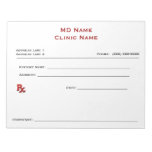1. The QPP Is Alive and Growing
There are significant changes in the new proposed rule relative to the 2018 plans laid out in the final rule governing the 2017 performance year, but the majority of the program is the same. Core program elements, such as performance categories and the structure of the program tracks, remains unchanged. Future program requirements look to be ramping as expected, as discussed below.
What does this mean for the small practice? MIPS has a definite and accelerating path, and now is a good time to get comfortable as the program ramps up the requirements over the next few years.
2. MIPS Cost Category in 2018
CMS has proposed that cost will again account for 0% of the composite performance score in 2018 and not impact payments in 2020. While this is still not the final rule, it has momentum, and CMS is requesting feedback before the final rule is published. Based on this information the category weights would stay the same in 2018 as they did in 2017, with Quality counting for 60%, Advancing Care Information counting for 25%, and Improvement Activities counting for 15%.
What does this mean for the small practice? While not directly responsible for cost outcome, it is a good idea to monitor and understand the process and your data now, expect inclusion of Cost in your Composite Performance Score in 2019.
FINAL RULE UPDATE: Notably, CMS will begin to assess providers on cost measures in 2018—a significant change from the proposed rule, which initially delayed the cost measures entirely until 2019. The cost category will be weighted at 10 percent of the MIPS final score in 2018 and will increase to 30 percent in 2019. Collectively, quality and cost performance will likely become a key determinant of high-performing providers.
3. More Flexibility for Small Practices
CMS is proposing to increase the planned thresholds for low volume exclusions in 2018. The 2017 thresholds, where clinicians or groups with ≤$30,000 in Part B allowed charges or ≤100 Part B beneficiaries. CMS is proposing thresholds of ≤$90,000 in Part B allowed charges or ≤200 Part B beneficiaries to qualify for exclusion in 2018.
What does this mean for the small practice? Low volume Medicare Part B practices may be excluded in 2018, to a larger degree than in 2017. All low volume practices should check their Medicare Part B metrics to determine their status.
FINAL RULE UPDATE: CMS confirmed the minimum thresholds. Providers are excluded from the QPP in 2018 if they bill $90,000 or less in Part B allowed charges or see fewer than or equal to 200 Part B beneficiaries.
4. Bonus Points Proposed
CMS has proposed adding additional bonus points to increase flexibility and reward clinicians and groups who have more difficulty scoring well in MIPS:
Proposed: Up to 10 percentage points available for performance improvement in the Quality category. This bonus will be based on the rate of improvement in the Quality category score between the 2017 performance year and the 2018 performance year.
Proposed: Additional bonus of up to 3 points available for eligible clinicians based on the medical complexity of patients they see. The assessment of medical complexity may be based on the average Hierarchical Conditions Category (HCC) risk score.
Proposed: A bonus of 5 points automatically awarded to any eligible clinician or group in a small practice with 15 or fewer clinicians.
What does this mean for the small practice? Small practices now have an added handicap that allows them to score bonus point to offset their small size, complex patient population and relative improvement in MIPS performance.
FINAL RULE UPDATE: Bonus opportunities added in 2018 performance year -
Clinicians can use a 2014 Edition and/or 2015 Edition Certified EHR. However, you receive a 10% bonus to your ACI score if you only use a 2015 Edition CERHT.
Receive up to 5 bonus points on your final score for treatment of complex patients.
Small practices receive 5 bonus points to their final score.
Small practices receive 5 bonus points to their final score.
A 5% ACI bonus is available for submitting to an additional public health agency or clinical data registry not reported under the performance score.
5. Virtual MIPS Groups are Proposed
Virtual Groups will be comprised of eligible clinicians in solo practices or groups of 10 or fewer clinicians who elect to jointly participate in MIPS. By doing so small practices can offset low scores with other practices that may have high scores and improve both practices overall performance. The group as a whole reports the combined score which is attributed to each practice in the virtual group.
What does this mean for the small practice? Identifying your practice's areas of high and low MIPS performance and joining a Virtual Group to offset each other will lead to much better MIPS scores for all the practices in the Virtual Group. You will need to elect to participate in a Virtual group in 2018 prior to the start of the 2018 performance period.
FINAL RULE UPDATE: Solo providers and small practices can form a virtual group without specialty or location limitations to participate in MIPS together. Those interested in the virtual group option should review the Virtual Groups Toolkit. The virtual group electronic submission deadline is December 1, 2017 for the 2018 performance year. Providers considering this new option for 2018 must act quickly.




No comments:
Post a Comment